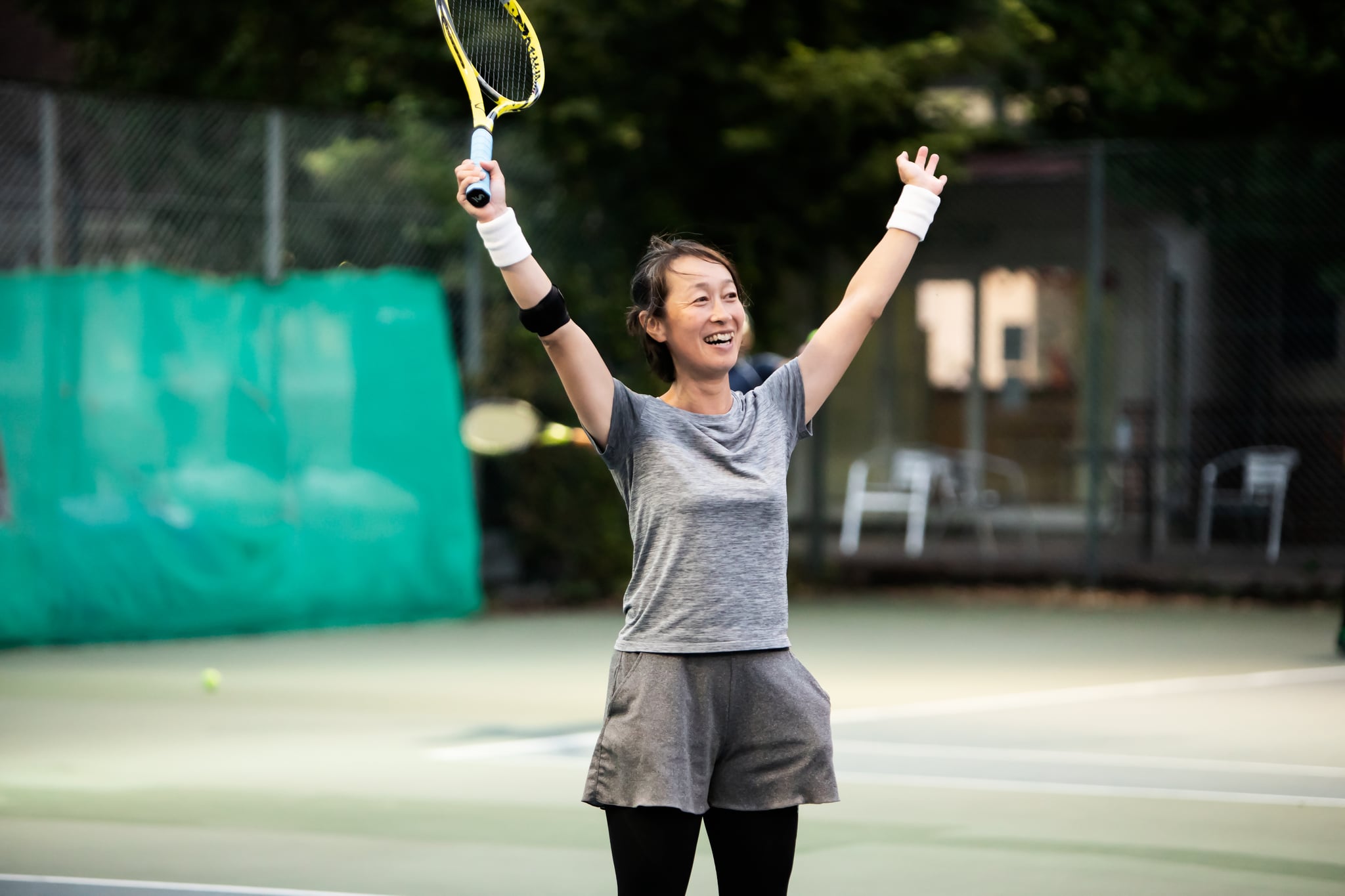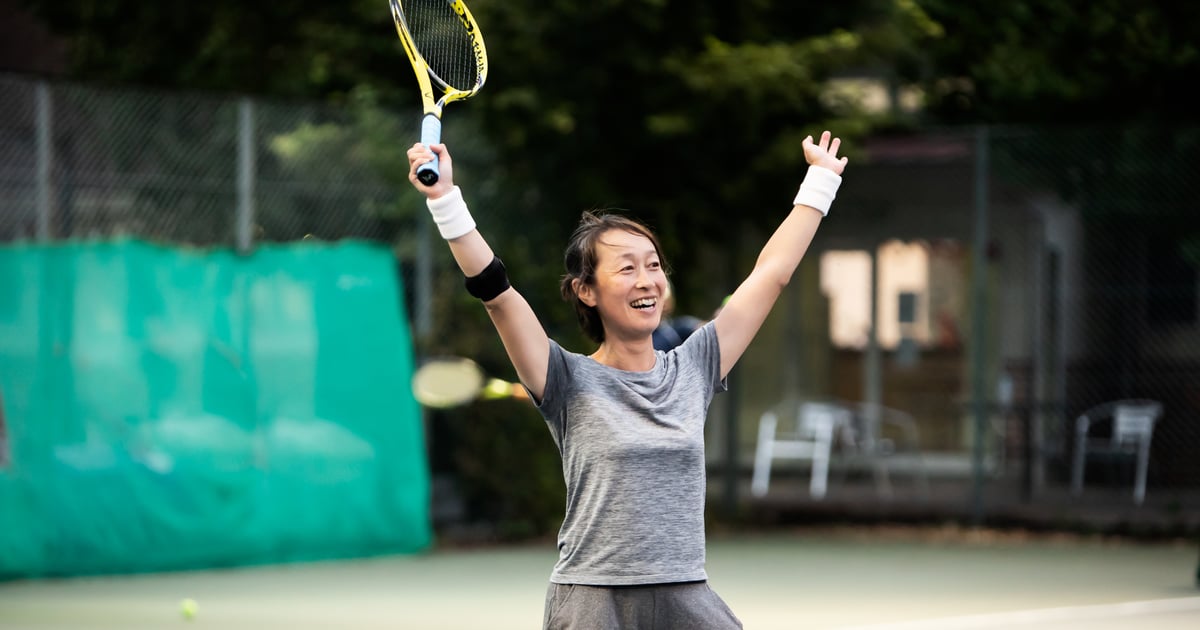
We know from past experts we’ve interviewed that some evidence suggests that exercise can increase the spread of the novel coronavirus (COVID-19), specifically when it’s exercise that is more aerobically intense and in groups. That being said, there are two factors that make workouts safer and reduce the risk of spreading the virus: being outdoors and being physically distanced from other people. That’s why playing tennis seems like the perfect form of physical activity right now if courts are open in your area.
Michael Dowse, the CEO and executive director of the United States Tennis Association, told USA Today, “Our sport is conducive to social distancing. Health and safety is paramount and tennis comes second, but once that first box is checked and it’s deemed safe, it’s the perfect sport for all of us to participate in coming out of this pandemic.” The USTA released tips and recommendations for playing tennis safely based off of guidance from the USTA Medical Advisory Group.
A USTA spokesperson confirmed to POPSUGAR that the guidelines were created for recreational play only as opposed to professional matches. Many international matches, like Wimbledon, are canceled, but the US Open is on track so far to take place this summer.
Highlights From the USTA Safe Tennis Recommendations For COVID-19
The recommendations from the USTA are meant to help keep tennis players safe. Of course, make sure that courts are open near you before you try to play recreationally. Some key recommendations from the list are as follows:
- Before playing: Try to limit your play time to those you live with or individuals who are low risk. People who feel sick, who have been in recent contact with someone who has tested positive for COVID-19, or who are high risk are cautioned against playing. For the latter, this is especially true if your state is in phase one or phase two of reopening (only in phase three is it considered safe for high-risk people to resume public interactions, according go to federal guidelines).
- Before playing: Sanitize your hands properly and wipe down your equipment with a disinfectant if you want to be extra cautious. Arrive as close as possible to when you need to be at the court. Bring personal protective equipment to be used appropriately (for example, masks when distancing cannot take place).
- While playing: Stay at least six feet apart from other players even when playing doubles, and do not make physical contact with them (think shaking hands or giving high fives).
- While playing: Avoid touching your face after handling equipment like tennis balls and rackets. Also, avoid sharing drinks, food, and towels.
- While playing: The USTA recommends you pick up balls with your foot and racket, and the spokesperson clarified that you should apply hand sanitizer immediately if you touch someone else’s tennis balls or equipment. The USTA also suggests only handling balls designated for you based on numbers (you can read more about that in the “Use Four Balls or Six Balls” section of the recommendations).
- After playing: Leave the court as soon as you’re done playing. Refrain from using a locker room to shower or change. Wash your hands thoroughly, or use hand sanitizer after leaving the court.
“The USTA recognizes the evolving and fast-changing nature of this situation and will continue to monitor and assess conditions to make future changes to the guidelines if needed,” the spokesperson said. For the full list of recommendations, go to the USTA website.
A few reminders: the CDC has stated that though viral particles can live on surfaces, transmission through respiratory droplets is the main concern for COVID-19 at this time. As experts have advised, if you’re able to safely distance yourself from others outside, you can opt out of wearing a mask. However, while working out distanced from people around you, if you want to wear a mask and are comfortable doing so, feel free.
POPSUGAR aims to give you the most accurate and up-to-date information about the coronavirus, but details and recommendations about this pandemic may have changed since publication. For the latest information on COVID-19, please check out resources from the WHO, CDC, and local public health departments.
